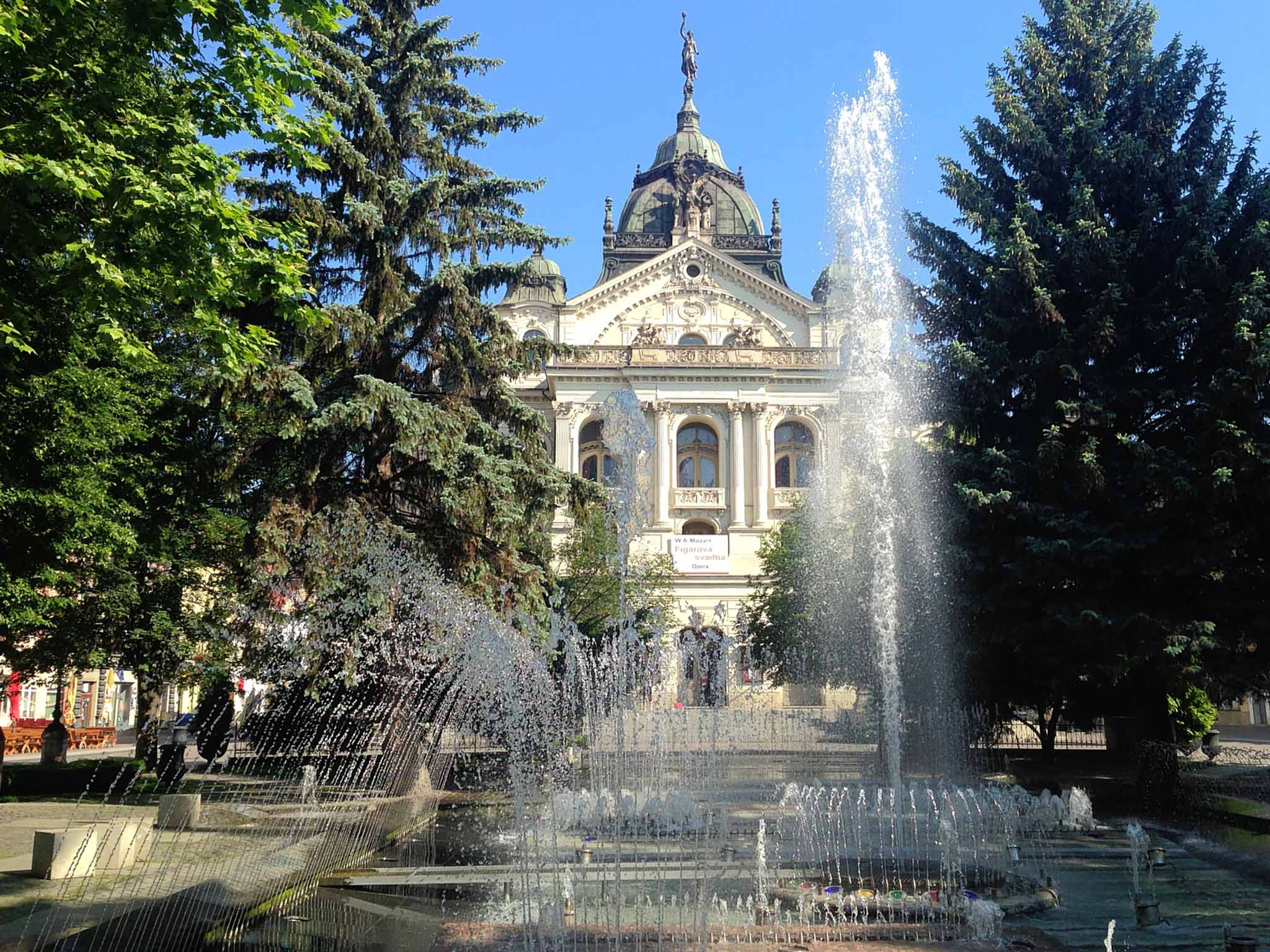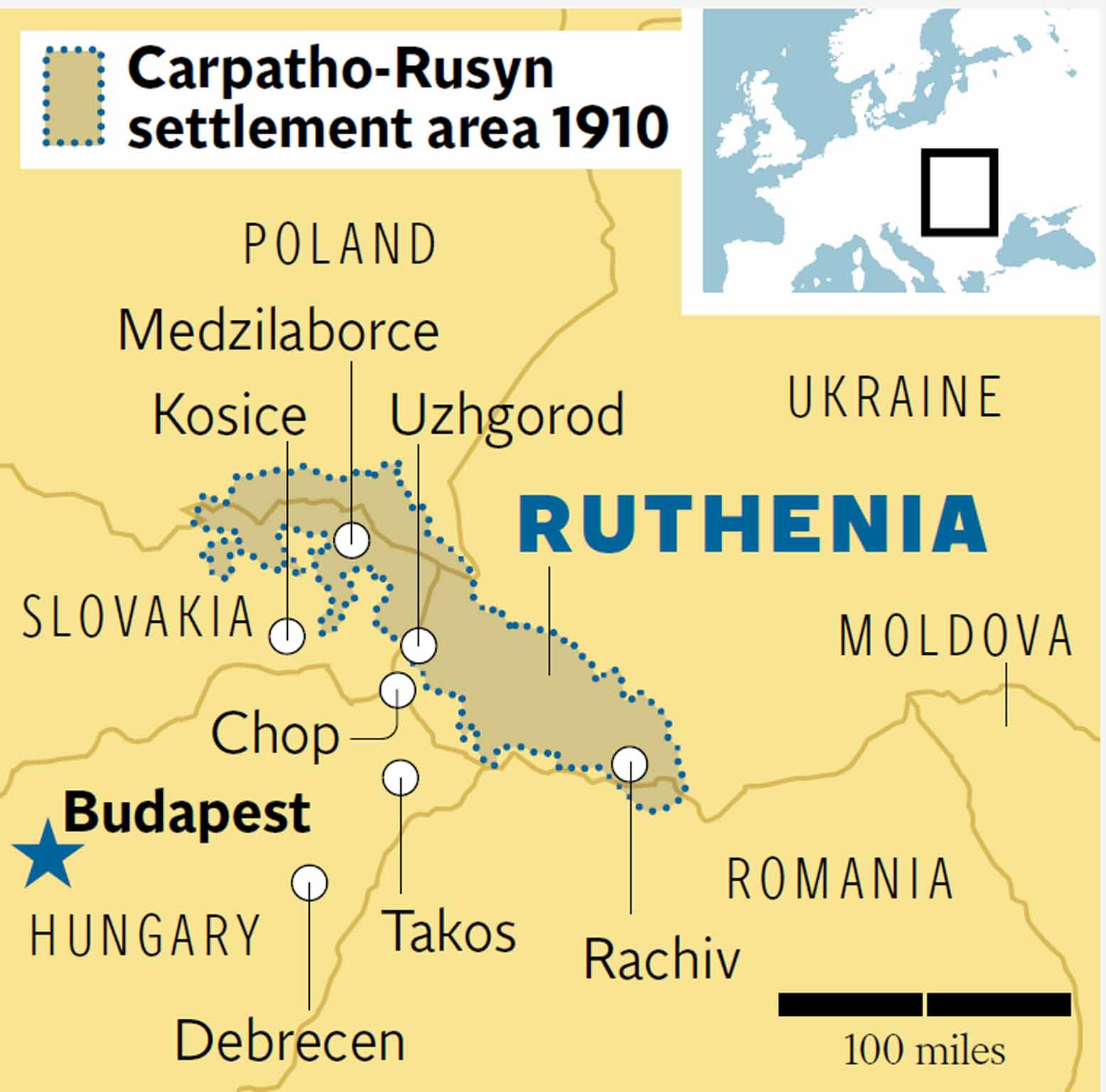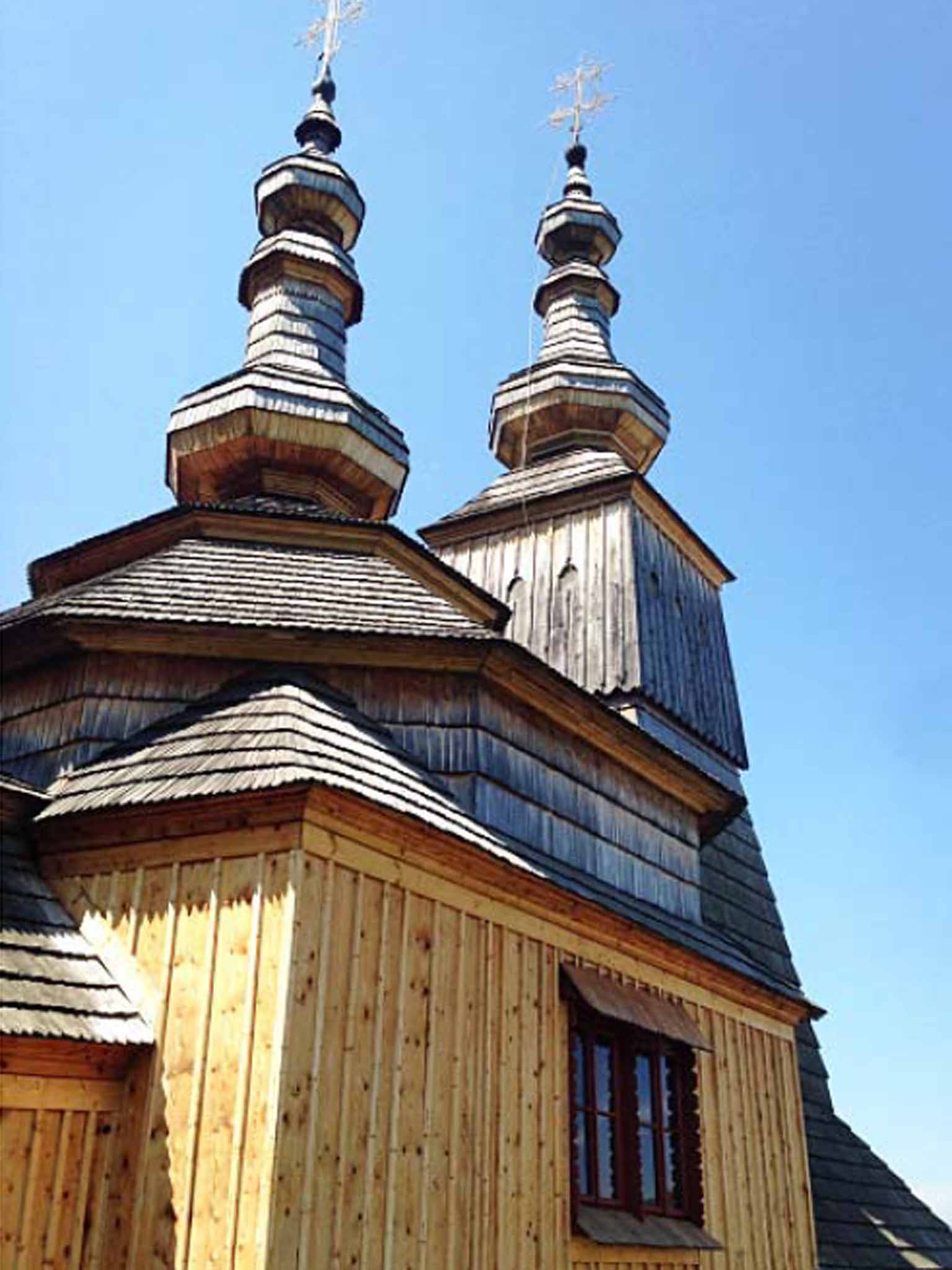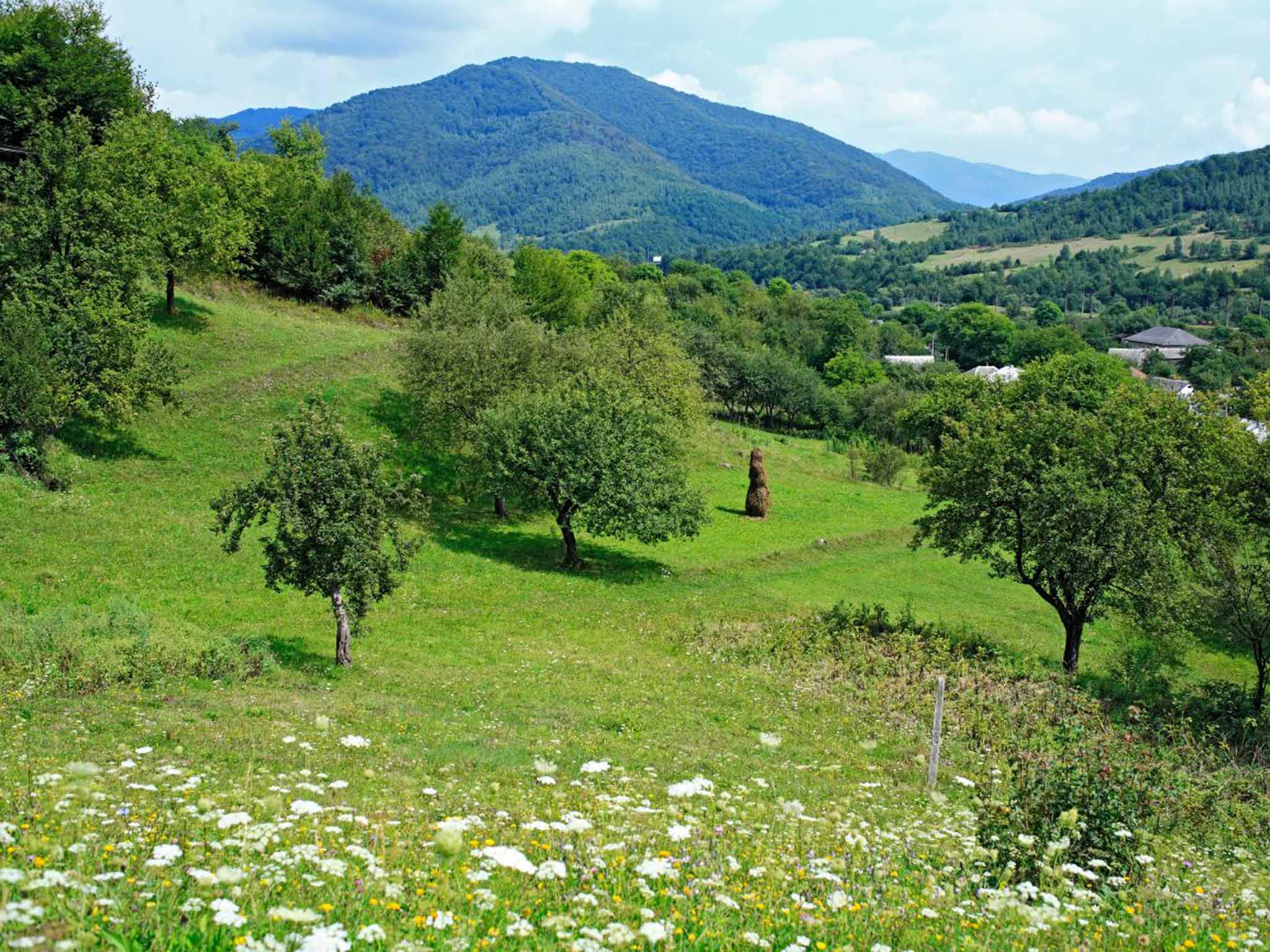The lost nation of Ruthenia: A journey through no man’s land
Searching for this historic country takes you through an intriguing slice of Europe. Just make sure you have your passport ready, says Simon Calder

Your support helps us to tell the story
From reproductive rights to climate change to Big Tech, The Independent is on the ground when the story is developing. Whether it's investigating the financials of Elon Musk's pro-Trump PAC or producing our latest documentary, 'The A Word', which shines a light on the American women fighting for reproductive rights, we know how important it is to parse out the facts from the messaging.
At such a critical moment in US history, we need reporters on the ground. Your donation allows us to keep sending journalists to speak to both sides of the story.
The Independent is trusted by Americans across the entire political spectrum. And unlike many other quality news outlets, we choose not to lock Americans out of our reporting and analysis with paywalls. We believe quality journalism should be available to everyone, paid for by those who can afford it.
Your support makes all the difference.Even by the erratic standards of frontiers in central Europe, this border post has had a colourful past. The side where I am presently standing marks a north-eastern extreme of the Austro-Hungarian Empire. The side I hoped to reach was the south-western frontier of another former superpower: the Soviet Union.
Thanks to a pair of imperial implosions at either end of the 20th century, and, oddly, the 2005 Eurovision Song Contest, I am in theory allowed to cross this frontier with only a British passport. But the Hungarian frontier guard wearing a jaunty blue beret tells me I need something else: a lift.
My travelling life has been frequently interrupted by officials ordering me not to hitch-hike, so to be instructed to thumb a ride over the border by a man in uniform feels weird. It also goes against the first law of international hitch-hiking: no sane driver will take you across a frontier. At best your presence will slow down their bureaucratic process, at worse you will turn out to be a drug smuggler and they will be incarcerated. But the smart young man is insistent: walking over the bridge is forbidden, so pedestrians must thumb a ride.
The location of this no man's land is a bridge across the Tisza river, marking the natural boundary where Hungary's great plain expires and the Carpathian mountains start to rise to the north-east. To the north-west, the hills of Slovakia ripple north towards the Polish border. This pretty patchwork of farmland and forest seems to comprise peripheral offcuts from of a quartet of nations untidily sewn together, with the seams being international frontiers. Unstitch the centuries, though, and this was a single entity: Ruthenia, no relation to the fictional kingdom of Ruritania.

The culture of the community, known as the Rusyn people, has survived the ethnic tsunamis that swept through Eastern Europe. Their little-known homeland is a newly accessible and richly rewarding region to explore, even if you are one car short of a border crossing,
The southern gateway is Hungary's second city, Debrecen. Each morning at 11, the normal hush of the airport is disturbed by the arrival of a flight from Luton. A couple of hours from Bedfordshire deposits you in a small, friendly city. Like so many cities that endured four decades of domination by Moscow, Debrecen is taking its time to wake up and make up for the waste of the communist era. Which makes it an easy place for the Western tourist to enjoy. You touch down in good time to inspect the Great Church and then have a Great Lunch, feasting on fresh local produce at prices so low that they seem to belong to a lost age.
Once you leave town, the pace of life, and trains, slows almost to a halt – giving time to try to pronounce the names of the drowsy towns through which you trundle. Nyirbator, Mateszalka and Vasarosnameny look more like unpleasant medical conditions than stations, but they lead to the tiny village of Takos. In the softening sunshine of long June afternoon, you discover a way of life that scarcely seems compatible with 21st-century Europe. A straggle of cottages, shaded by ancient trees, gathers around a village green. At its heart is the symbol of Ruthenia: an elegant wooden Calvinist church, built in 1766 with such exquisite care that it has earned the nickname "the barefoot Notre-Dame".
Outside, it resembles a child's drawing of a church made real, its timbers stained by the centuries. Inside, it is a miraculous work of folk art, decorated with wooden ceiling panels that glorify God with exquisitely inscribed flowers. The keeper of the key said she was happy to unlock the adjacent belltower, on one condition: "No bing-bong!" The Rusyn style is to have the bells in a separate building, constructed entirely of wood – with no metal nails, because these signify the suffering of Christ on the cross. As I climbed merrily on high, the craftsmanship was impressive, the aroma of wood, incense and flowers heavenly.

Back on the border, a whiff of cigarette smoke heralds the arrival of another prospective emigrant: Roland, a chain-smoking Ukrainian. He confirms that it is standard practice here to exit the European Union by hitch-hiking. The steel bridge across the Tisza river looks broad enough to handle a platoon of pedestrians – or a convoy of Soviet tanks. In 1956, indeed, the T-54s rolled into from the USSR to Hungary across this very bridge, to flatten the first big Eastern European uprising against the Kremlin's domination.
Across the river stands Chop, a town that has changed sides more often than Harry Redknapp, the football manager. A century ago it was Austro-Hungarian; the 1920 Treaty of Trianon carve-up assigned Chop to newly created Czechoslovakia. In 1938 Hitler handed the region to Hungary, where it endured the Second World War. In 1945, the geo-political poker game known as the Yalta Conference awarded Chop to the Soviet Union, where it stayed until the USSR dissolved in 1991, and the fledgling democracy of Ukraine bloomed.
I first visited Ukraine in 2003. Old bureaucracy died hard, so I had to take a wad of postal orders to the Ukrainian Consulate to secure a visa. But the following year, Ukraine won the Eurovision Song Contest, and with it the right to host the event in 2005. Faced with the inevitable surge of contestants, media and fans, the government in Kiev opened its borders to visa-free travel – and, a decade later, Eurovisitors are still the winners.
A van stops. It is almost completely full of bin-bags containing plastic sandals, but they yield enough for us to clamber aboard.
"Border Control is performed by Natalia Koshulyuk, 2K-0789," announces the sign at the Ukrainian frontier post. Neither the human cargo nor the goods within the van seem to surprise Ms Koshulyuk. She makes an unflattering double-take of the passport photo of the driver's companion – "Is this really you?", her expression asks. Then we enter the largest country entirely in Europe.

With the radio playing "That's the Way I Like It," the driver takes us the 24km to the city of Uzhgorod, the closest that Ruthenia has to a capital. Its big day was on 15 March 1939, when Carpatho-Ukraine – the approximate core of Ruthenia – declared itself an independent republic. Sadly, by teatime on the same day the Hungarian army had moved in with Hitler's blessing. After the war it became part of the Soviet Union, under the control of Stalin.
As Roland and I clamber out in the car park of the Intourist Hotel, I'm back in the USSR. In case you were not able to enjoy an Intourist holiday, you should know that this organisation was the main provider of travel for foreigners within the Soviet Union. Whichever part of that blessed land they happened to be exploring, from Minsk to Vladivostok, Western travellers were billeted in identical grey monoliths that proclaimed themselves to be Intourist Hotels. Dowdy, soulless and smelling faintly of decay – and that was just us guests. Inside the lobby in 2015, little has changed, but out on the streets Uzhgorod has become a bright, friendly city that has much to enjoy.
I haven't checked the claim that the riverside avenue of linden trees is the longest in Europe, but I can confirm that lunch in its shade is a delight. The castle is a proper old Ruritanian ruin, and just beneath it the Pid Zankom "museum café" serves strong, bitter coffee among the remnants from Ukraine's unhappy affair with Russia.
Opposite a handsome Greek-Catholic church stands the tourist office. I tell Victoria, the lady who runs it, that I need to get across the border to Slovakia. That exit from Ukraine also has a no-pedestrians rule, she says. But try this tour guide ...
When I arrive for our 5.30pm meeting, Miron is waiting with a smile and a surprise. "My real job is in insurance. I am a tour guide for a hobby, because I love Transcarpathia" – the region separated from the rest of Ukraine by the mighty Carpathian range, and spilling into Slovakia. Miron, both affable and expert, talks as he drives. Uzhgorod was formerly known as Ungvar, and gave Hungary its name. The city survived the Second World War because the Red Army passed to the north and the clouds created by the local climate kept the bombers away. Between the wars, there was no frontier here, as Uzhgorod was part of Czechoslovakia.
We speed over the border because he has an EU passport; the Hungarian government gives them to Ukrainians such as Miron so long as they can demonstrate proficiency at the language.
The alphabet reverts from Cyrillic to Roman as we enter Slovakia, but we remain in Ruthenia, with the same lilting meadows punctuated by tiny churches. This is a land of fleeting glimpses, which might have pleased the most celebrated member of the Ruthenian diaspora. Andy Warhol has been famous for much more than 15 minutes – but inconveniently for the region's world image, never actually visited his homeland. The Pop artist was born in Pittsburgh of Ruthenian parents in 1928. He was besotted with New York, Hollywood and the Beatles, not with his roots. Nevertheless, the town of Medzilaborce, near the Polish border and close to where his ancestors lived, did not let this obstruct a plan to create an enthralling Andy Warhol Museum within a Soviet-era building.
As shocking as the artist's blond hair, the collection transports you from rural Eastern European to a 1960s Manhattan loft, through familiar Warhol images and an enriching muddle of memorabilia.
Warhol used to claim "I come from nowhere," and a history of the Ruthenians is called The People from Nowhere. But look closely, and their culture is still here, there and everywhere.
Getting there
The two main gateways to the Ruthenia region are Debrecen in Hungary and Kosice in Slovakia. Both are served from Luton by Wizz Air (0911 752 2257; wizzair.com), which has also opened a new link this month from Doncaster to Kosice.
Getting around
Public transport is slow but cheap: the two-hour, 70-mile Hungarian Railways trip from Debrecen to the Ukrainian border at Zahony costs 2,200 forints (£5).The German Railways website, bahn.de, has comprehensive online schedules for Hungary, Slovakia and Ukraine (note that the westernmost city is termed "Ujgorod").
Between Uzhgorod and Kosice, a ticket on Eurobus (eurobus.sk) costs €6.70 for the 3 hour, 30 minute trip.
Taxis are cheap by UK standards, so suitable for long-distance journeys.
Money
While the euro is accepted in all three countries, it is the official currency only in Slovakia. Bureaux de change with competitive rates are plentiful in the Ukrainian city of Uzhgorod, and in Debrecen in Hungary.
More information
Miron Kabai, tour guide: 00 38 050 372 2107; mkabay@ukr.net
Join our commenting forum
Join thought-provoking conversations, follow other Independent readers and see their replies
Comments